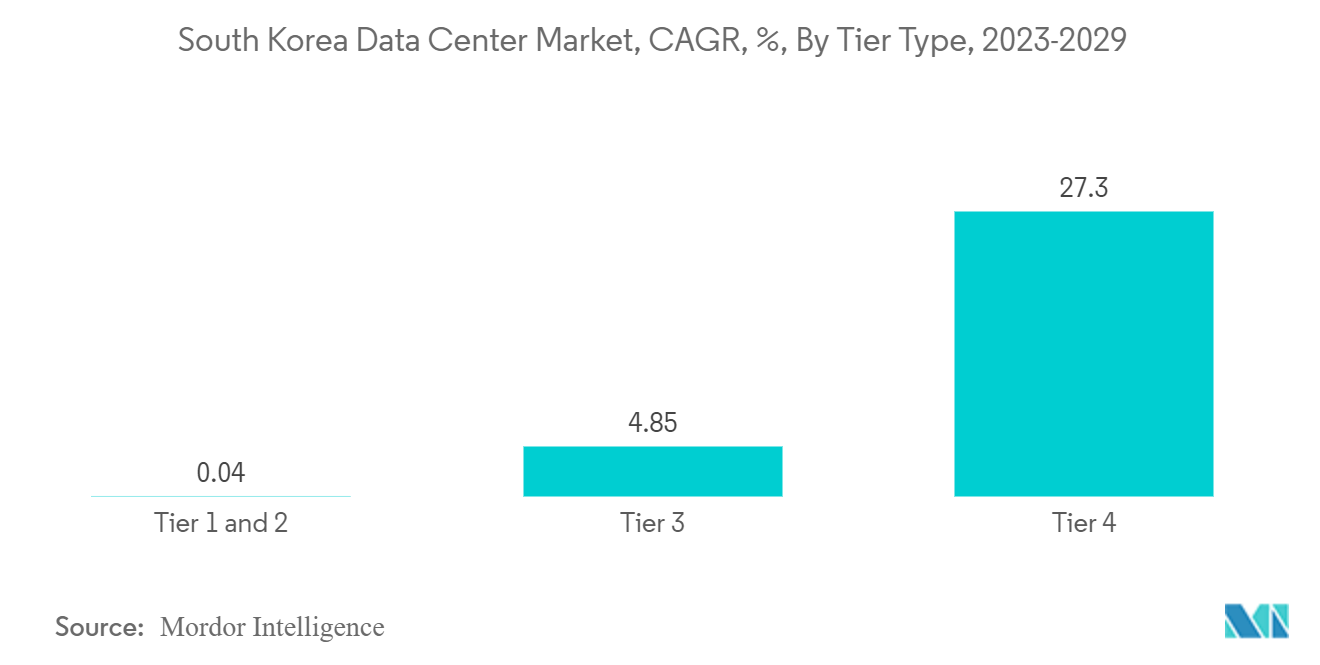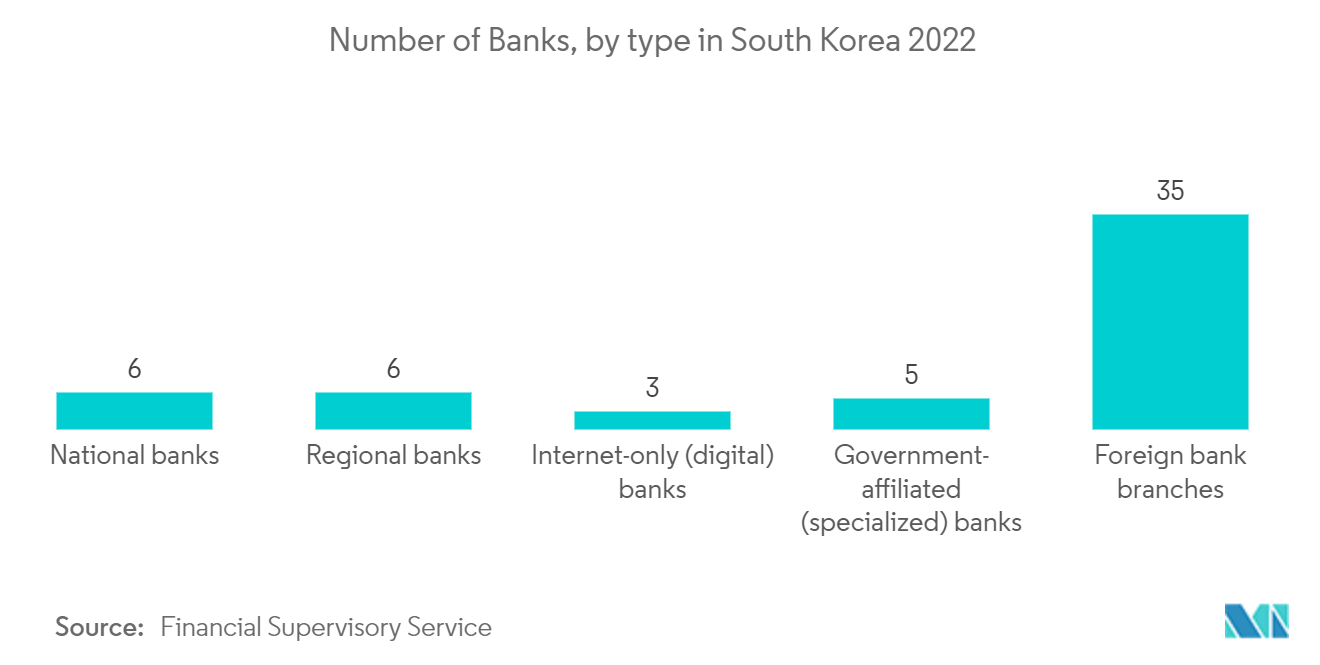Market Trends of South Korea Data Center Construction Industry
Growing Preference for Tier 4 Standard Data Centers
- Tier 1 & 2 facilities are losing demand due to their inability to meet the growing uninterrupted business services. An increasing number of global conglomerates are creating business continuity services and gradually shifting priority to tier 3 and 4 data centers.
- Among tier 3 and 4, tier 4 facilities are expected to grow ten times faster than tier 3 facilities. By the end of 2029, the country's tier 3 and 4 facilities are expected to provide an IT load capacity of 520.43 MW and 1,050.19 MW, respectively. Tier 4 facilities are expected to register a CAGR of 33.54%, whereas tier 3 facilities are expected to register 3.74% during the forecast period.
- Online activity is widespread in South Korea, with over 90% of people using the internet. Users communicate primarily through social media, such as instant messengers, emails, and social networking services. An uninterrupted supply of services is required for such activities, which is only possible with tier 3 and 4 facilities.
- In recent years, the progress of the Korean economy's digital transformation driven by next-generation industries, such as payment technology, AdTech, gaming, and fintech, has created room for a new life in service-based digital companies.
- As a result, the country's demand for digital infrastructure is accelerating, overcoming the obstacles created by domestic businesses over the past three decades with tier 1 & 2 facilities.

BFSI to Hold Significant Market Share
- The country's banking sector has always been known to embrace digital transformation. Recently, the industry has committed USD 492.7 million for digitization plans. South Korea has an advanced and profitable financial services sector, including Asia's third-largest insurance and banking markets. Strong fundamentals and aggressive regulations underpin the banking sector's stability. South Korea's non-performing loan ratio is less than 1%, which is low by regional standards. Foreign investors own about 70% of the banking sector.
- The Banking, Financial Services, and Insurance (BFSI) segment of the South Korean data center market reached an IT load capacity of 49.14 MW in 2022. It is expected to record a CAGR of 22.24% to reach a capacity of 200.45 MW by 2029. By 2029, the BFSI segment is expected to hold 14% of the market share.
- The government has announced its plans to turn Seoul into a "fintech test bed," which could further boost the demand for data centers from the BFSI segment. Korean banks are preparing for digitization by accelerating the closure of their branches nationwide. This move also aims to cut fixed costs to free up money to invest in growing digital businesses. At present, fewer people visit branches due to the growing popularity of mobile banking platforms. Such trends may drive the demand for data centers from the BFSI segment in the coming years.
- The country houses more foreign bank branches compared to national banks and has three internet-only banks. With digital transformation initiatives, more internet banks surfaced in the country, which increases the dependency on South Korea, driving opportunities for the vendors in the market.

